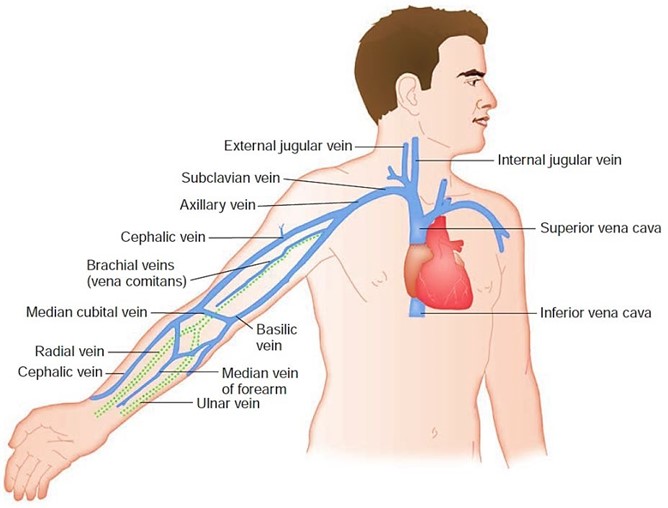Here is the edited text:
A nurse is caring for a client who has a traumatic brain injury. The nurse notes that the client has a widening pulse pressure. Which of the following actions should the nurse take?
Administer a vasodilator medication.
Elevate the head of the bed to 30°.
Apply a cold compress to the forehead.
Decrease the oxygen flow rate.
The Correct Answer is B
Choice A Reason: This choice is incorrect because administering a vasodilator medication may lower the blood pressure and worsen the cerebral perfusion. A vasodilator medication is a drug that relaxes the blood vessels and reduces the resistance to blood flow. It may be used for clients who have hypertension, angina, or heart failure, but it does not help to reduce the intracranial pressure (ICP).
Choice B Reason: This choice is correct because elevating the head of the bed to 30° may help to improve the venous drainage and decrease the ICP. ICP is the pressure exerted by the brain tissue, cerebrospinal fluid (CSF), and blood within the cranial cavity. A normal ICP range is 5 to 15 mm Hg, and an elevated ICP (>20 mm Hg) can cause cerebral ischemia, herniation, or death. Therefore, positioning the client in a semi-Fowler's position (30° angle) or high- Fowler's position (60° to 90° angle) can facilitate breathing and prevent further complications.
Choice C Reason: This choice is incorrect because applying a cold compress to the forehead may cause vasoconstriction and increase the ICP. A cold compress is a device that applies cold temperature to a body part to reduce inflammation, pain, or swelling. It may be used for clients who have headaches, sprains, or bruises, but it does not help to reduce the ICP.
Choice D Reason: This choice is incorrect because decreasing the oxygen flow rate may cause hypoxia and worsen the cerebral ischemia. Hypoxia is a condition in which the body or a part of it does not receive enough oxygen. It may cause symptoms such as confusion, agitation, or cyanosis. Therefore, providing adequate oxygenation and ventilation is essential to maintain the brain function and prevent further damage.

Nursing Test Bank
Naxlex Comprehensive Predictor Exams
Related Questions
Correct Answer is D
Explanation
Choice A Reason: This is incorrect because cognitive impairment that decreases over several months post-injury is more likely to occur in a client who has a diffuse axonal injury, which is a widespread damage to the brain's white mater.
Choice B Reason: This is incorrect because neurologic deficits that increase up to 2 weeks post-injury are more likely to occur in a client who has a subdural hematoma, which is a collection of blood between the dura and the arachnoid membranes.
Choice C Reason: This is incorrect because a change in the level of consciousness that develops over 48 hr is more likely to occur in a client who has an intracerebral hematoma, which is a collection of blood within the brain tissue.
Choice D Reason: This is correct because a lucid period followed by an immediate loss of consciousness is a typical manifestation of an epidural hematoma, which is a collection of blood between the skull and the dura. The lucid period occurs when the initial bleeding stops and the client regains consciousness. The immediate loss of consciousness occurs when the bleeding resumes and causes increased intracranial pressure.
Correct Answer is A
Explanation
Choice A Reason: To calculate the total body surface area (TBSA) affected by burns using the Rule of Nines, the body is divided into sections, each representing a percentage of TBSA:
- Front of one leg = 9%
- Back of one leg = 9%
- Front of one arm = 4.5%
- Back of one arm = 4.5%
Now for the calculation:
-
Both legs (front and back):
- Front of both legs = 9% × 2 = 18%
- Back of both legs = 9% × 2 = 18%
- Total for both legs = 18% + 18% = 36%
-
Both arms (front and back):
- Front of both arms = 4.5% × 2 = 9%
- Back of both arms = 4.5% × 2 = 9%
- Total for both arms = 9% + 9% = 18%
-
Total TBSA:
- Legs (36%) + Arms (18%) = 54%
The nurse should document burns to 54% of the client's total body surface area (TBSA).
Choice B Reason:This choice is incorrect because it uses the original rule of nines for adults, not children. It also does not account for the depth and degree of the burns.
Choice C Reason: This choice is incorrect because it uses the original rule of nines for adults, not children. It also does not account for the depth and degree of the burns.
Choice D Reason: This choice is incorrect because it uses a random percentage that does not correspond to any rule or calculation.
Whether you are a student looking to ace your exams or a practicing nurse seeking to enhance your expertise , our nursing education contents will empower you with the confidence and competence to make a difference in the lives of patients and become a respected leader in the healthcare field.
Visit Naxlex, invest in your future and unlock endless possibilities with our unparalleled nursing education contents today
Report Wrong Answer on the Current Question
Do you disagree with the answer? If yes, what is your expected answer? Explain.
Kindly be descriptive with the issue you are facing.
